Small Group Experiential Travel
Tour Code
KT2
Start
Nairobi (NBO)
End
Antananarivo (TNR)
Tour type
Cultural
Max Group Size
18
When To Go
Sep
Activity Level
3 - Active
Overnight in
Nairobi, Nakuru, Nanyuki, Antananarivo, Fianarantsoa, Toliara, Zanzibar, Arusha, Maasai Mara, Amboseli National Park, Ngorongoro Conservation Area, Serengeti National Park, Lake Manyara, Antsirabe, Ranomafana, Ranohira, Andasibe-Mantadia, Berenty
- Overview
- Info & Inclusions
- Itinerary
- Map & Hotels
- Photos
- Dates & Prices
Highlights
- Meeting local tribal groups
- Maasai Mara/Serengeti: endless plains
- Snows of Kilimanjaro from Kenya's Amboseli Park
- Ngorongoro Crater: natural wonder
- Exotic spice island of Zanzibar
- Leapin lemurs!
- Madagascar's unique flora and fauna
Description
Embark on an unforgettable journey through East Africa, exploring the incredible diversity of Kenya, Tanzania, and Madagascar. Begin in Kenya, where vibrant Nairobi sets the tone for an adventure that takes you to stunning national parks like Amboseli, Ol Pejeta, and Maasai Mara. With the option to soar above the savannah in a hot-air balloon, you'll experience the thrill of Africa's wildlife up close.
As you enter Tanzania, rolling hills and traditional villages give way to the breathtaking Ngorongoro Conservation Area and the Serengeti National Park, where the "Big Five" and an incredible array of wildlife await. A visit to the island paradise of Zanzibar, with its ancient alleys, colorful cultures, and pristine beaches, is the perfect interlude before continuing to Madagascar.
This enchanting island is a world apart, with brightly colored houses, unique flora and fauna, rugged mountains, and lush grasslands. As you explore Madagascar's vibrant culture and stunning landscapes, you'll create memories that will last a lifetime.
As you enter Tanzania, rolling hills and traditional villages give way to the breathtaking Ngorongoro Conservation Area and the Serengeti National Park, where the "Big Five" and an incredible array of wildlife await. A visit to the island paradise of Zanzibar, with its ancient alleys, colorful cultures, and pristine beaches, is the perfect interlude before continuing to Madagascar.
This enchanting island is a world apart, with brightly colored houses, unique flora and fauna, rugged mountains, and lush grasslands. As you explore Madagascar's vibrant culture and stunning landscapes, you'll create memories that will last a lifetime.
Price Includes
- Tour leader or head guide services with local guide support at some locations (see also “Staff & Support” below)
- Most meals are included (see detailed itinerary)
- All accommodation, transport, sightseeing and entrance fees for sites noted as 'visited' in the detailed itinerary
- Gratuities for drivers and local guides, restaurant staff, porters
- Airport transfers for land & air customers arriving/departing on tour dates. Those extending their stay will have their transfers included if they book both their air and extra accommodation through Adventures Abroad.
Exclusions
- International airfare to/from the tour
- Tour Leader/head driver gratuities, some lunches (see itinerary), drinks, personal items (ie laundry), international (if applicable) and domestic air taxes, visa fees, and any excursions referenced as 'optional'
- For any excluded meals, see the detailed day-by-day itinerary
- Airport transfers for Land Only customers
- Optional trip cancellation insurance (for more information see “Resources” tab)
- ZANZIBAR requires that you purchase an insurance policy that covers you for your stay in Zanzibar. This is in addition to any other insurance may already have for your entire trip and is not included in our tour price. For more information, please refer to https://visitzanzibar.go.tz/
Trip Info
- Seasonality and Weather:
KENYA/TANZANIA:
During January/February, Kenya and Tanzania experience a dry and warm season, often referred to as the "short dry season." Temperatures are pleasant, with average highs ranging from 23C to 28C (73°F to 82°F). This is an excellent time to visit, as the weather is conducive to outdoor activities like wildlife safaris, hiking, and beach relaxation. The dry conditions also make it easier to spot wildlife, as they congregate around water sources.
September marks the beginning of the "long dry season" in Kenya and Tanzania. The weather is generally warm and sunny, with average highs ranging from 24C to 29C (75°F to 84°F). This is a great time to visit, as the dry conditions make it ideal for outdoor activities, and the temperatures are comfortable. The wildlife is also more concentrated around water sources, making it easier to spot.
October is usually a warm and dry month in Kenya and Tanzania, with average highs ranging from 25C to 30C (77°F to 86°F). This is still a good time to visit, as the weather is generally pleasant, and the dry conditions make it easy to spot wildlife. However, the temperatures can be hotter than in September, and the dry conditions can be more pronounced.
In summary, January/February, September and October are all good times to visit Kenya and Tanzania, with pleasant temperatures and dry conditions. However, if you're sensitive to heat, September might be a better option as the temperatures are slightly milder.
If you're a fan of African wildlife photography or television, you likely know about the Great Migration of wildebeest and zebra in the Serengeti and Maasai Mara. The migration doesn't have a set schedule or route, as it's driven by unpredictable rains. Generally, the best time to see large herds is during the dry season, between July and early October. However, sightings can occur outside this period too. If you're hoping to see dramatic river crossings like on National Geographic, keep in mind that photographers often wait days or weeks for those moments—good luck and happy 'hunting'!
Madagascar's climate varies significantly depending on the region, from tropical along the coast to more temperate inland. Generally, the island experiences a dry season from April to October and a wet season from November to March. The higher elevations are cooler than the coastal areas.
MADAGASCAR: September and October fall within Madagascar's dry season, making it a popular time to visit. The weather is generally sunny and dry, with lower humidity than other times of the year. Temperatures in the highlands during this period typically range from 18-25C (64-77F) during the day, dropping to 10-15C (50-59F) at night. Coastal areas will be warmer, with daytime highs around 28-32C (82-90F). Rainfall is minimal, making it ideal for hiking and exploring the island's unique flora and fauna. - Transport and Travel Conditions:
Our land transport comes in the form of rugged and spacious 4x4 Land Rover/Land Cruiser-style vehicles, with seating for 4-6 plus driver (you can view photos by accessing the “Gallery” tab toward the top of this page). The vehicles have pop-up roofs to enhance wildlife viewing while in parks and reserves. Most travellers comment that the climate in the savanna is such that air-conditioning is not critical (an open window offers adequate fresh air)
The only physical activity while on safari is limited to walking to/from your room from the main public areas of our hotels/lodges (some of which are spread out). One must also be aware that our programs are ambitious -- some early starts, long/full days of road travel on some some poor/rough roads, and some dust and heat, which can cause fatigue over time.
MADAGASCAR: 24-30 seat bus, perhaps smaller if groups size warrants. Roads are generally not good, some are just plain bad (and dusty). Though all efforts are made to ensure that vehicles are in excellent condition, punctures and weather may cause delays and require patience.
The #3 difficulty rating on this tour refers specifically to the Madagascar section, on which, in order to fully enjoy and experience what Madagascar has to offer, one must be prepared to hike over uneven terrain, perhaps with mud and rocks and roots and heat. The lodge properties we use are also very spread out and the distance from main building to guest rooms may be considerable. There are also plenty of stairs throughout. Of course we do not "force" anyone to participate in activities listed in our itinerary; however, if one chooses to skip walks, one will miss most of what the country has to offer the visitor. The Kenya/Tanzania section would be rated a Level 1 on our scale.
Am I suitable for this tour? Please refer to our self-assessment form - Accommodation:
KENYA & TANZANIA: Hotels and lodges are 4-5 star properties with hot water, electricity, mosquito netting, dining areas, bar, swimming pools. Remote lodges are not air-conditioned though many are at higher elevations where heat is not a factor. Many lodges are quite spread out and you will need to be able to walk up to 10 minutes from public areas to your room.
MADAGASCAR: 3-4 star, hotels and lodges with hot water, electricity (maybe part-time), mosquito netting, dining areas, bar, sometimes swimming pools. Remote lodges are not air-conditioned though many are at higher elevations where heat is not a factor.
Hotel porter service is available throughout (see 'Inclusions'). Single rooms are limited and likely smaller than twins. Many lodges are quite spread out and you will need to be able to walk up to 10 minutes from public areas to your room. - Activity Level: 3
These tours are considerably more strenuous than our Level 1 & 2 "cultural" tours and feature walks/hikes on undulating and uneven pathways for 3-7 hours at a leisurely pace. We don't hike every day, but participants should be fit and active and accustomed to trail walking, possibly in remote locations, and be prepared to engage in a conditioning regimen prior to the trip. Altitude may also be a factor on some tours, though none of our hiking tours currently occur above 3000m/10,000 ft. These are hotel-based tours with no camping, and you are required to only carry what you need for the day.
To learn more about the Activity levels, please visit our tour styles page. - Staff and Support:
Tour Leader throughout, drivers, local guides at various locations.
Groups of 7 or less in Madagascar may be led / guided by one of our local Madagascar-based personnel. - Group Size:
Maximum 18 plus Tour Leader
Download Itinerary
- Day 1:Arrive in NairobiToday we arrive in Nairobi, the capital of Kenya.
Part of Maasai land when the British arrived, this modern capital grew with the development of the railway. Derived from a Maasai word meaning "Cold Water," Nairobi is a pleasant mix of colonial British with modern and traditional African influences.
Overnight in Nairobi.
Included Meal(s): Dinner - Day 2:Nairobi - Ol Pejeta ConservancyToday we travel from Nairobi, through the "White Highlands," so called because of the large number of Europeans who settled here, northwards to the lower slopes of Mt Kenya, rising to 5199 m (16,728 feet), Africa's second highest peak. Our (+/- 4 hour) drive will take us into the Central Highlands, the heartland of the Kikuyu people. This is a very fertile region, well-watered, intensively cultivated, and thickly forested. The land was coveted by the Europeans who began arriving in ever-increasing numbers once the railway through the area was completed. The settlers established coffee and tea plantations on the eastern slopes of Mt Kenya and cultivated wheat on the western slopes.
Our destination is Sweetwaters, a luxury tented camp clustered around a water hole and set in the pristine calm of the private Ol Pejeta Conservancy, a non-profit organization supporting endangered species, tourism and community outreach. Ol Pejeta is East Africa's largest Black Rhino sanctuary, the only place in Kenya to see chimpanzees, and holds some of the highest predator densities in Kenya.
This afternoon we'll enjoy our first game drive within the conservancy.
Overnight at Sweetwaters.
Included Meal(s): Breakfast, Lunch and Dinner - Day 3:Ol Pejeta ConservancyOl Pejeta Conservancy is a sprawling landscape, a mosaic of diverse habitats stretching across over 350 square kilometers. Imagine rolling grass plains, interspersed with wooded grasslands, acacia woodlands, and patches of dense evergreen thickets – all contributing to a rich and varied ecosystem. This diversity of habitats supports an astounding variety of animals, including, of course, the iconic "Big Five" – lion, leopard, elephant, rhino, and buffalo.
Today, we'll immerse ourselves in this wildlife haven with both morning and afternoon game drives, maximizing our chances of encountering its incredible inhabitants. But that's not all! We'll also have the unique opportunity to visit the Sweetwaters Chimpanzee Sanctuary, a truly special place. This sanctuary is the only one of its kind in Kenya, providing a refuge for the highly endangered and remarkably intelligent chimpanzee species. These chimpanzees, often orphaned or rescued from abusive situations in West and Central Africa, find a safe and nurturing home here. The sanctuary's dedicated staff carefully nurses them back to health, allowing them to live out their days in the security of a vast, natural enclosure. It's a chance to witness these fascinating primates up close and learn about the important conservation work being done to protect them.
Overnight at Sweetwaters Camp.
Included Meal(s): Breakfast, Lunch and Dinner - Day 4:Ol Pejeta - Great Rift Valley - Lake Nakuru National ParkThis morning we travel to Lake Nakuru, a shallow soda lake in the Rift Valley (+/- 5 hours). The Rift Valley was created millions of years ago under the strain of enormous volcanic eruptions which resulted in a giant split in the earth's surface from Syria to Mozambique. Lava flowed into the valley, forming escarpments on either side of the gigantic trough which can be up to 80 km (50 miles) wide, big enough to be visible from space. At the lake, depending on the water levels, we may have the opportunity to see flamingos,* in addition to the over 340 species of birds that have been recorded in the Rift Valley!
Lake Nakuru is very shallow and can fluctuate up to five metres (12 feet) each day. When the water is low, you can see a white band of crystallized soda along the shoreline. This is also one of the best places in Kenya to view the rare White Rhino as we explore the park on our afternoon game drive.
* This, and other Rift Valley lakes, have been known in the past for huge numbers of flamingos; however, this can be very "hit and miss" owing to seasonal variations in rainfall and water level, and the increasing frequency of drought. The best we can do is hope for the best!
Overnight in Lake Nakuru National Park.
Included Meal(s): Breakfast, Lunch and Dinner - Day 5:Lake Nakuru - Maasai Mara National ReserveWe rise early this morning and bid farewell to Lake Nakuru National Park, continuing our journey through the dramatic landscapes of the Great Rift Valley. Our route takes us past the serene beauty of Lake Naivasha and the imposing presence of nearby Mount Longonot. This relatively young volcano serves as a stark reminder of the Rift Valley's turbulent geological history. After a drive of approximately six hours, which includes a stretch on a less-than-perfect road, we'll arrive at our lodge nestled within the world-renowned Maasai Mara National Reserve, just in time for a well-deserved lunch.
The Maasai Mara is essentially a seamless extension of the vast Serengeti ecosystem, and it boasts an astonishing concentration of wildlife. This reserve is home to the largest population of lions in all of Kenya, a testament to its rich biodiversity. Large herds of plains game roam freely across the Mara's grasslands, creating a spectacle of nature at its finest. The Maasai Mara is also arguably the best place in Kenya to spot cheetahs, those sleek and graceful hunters.
Later this afternoon, we'll embark on another thrilling game drive, venturing out into the reserve in search of its incredible inhabitants. The possibilities are endless, and every game drive offers a unique and unforgettable experience.
Time permitting, we may have the opportunity to visit a local Maasai village. This cultural immersion would provide a fascinating glimpse into the Maasai people's traditional way of life, allowing us to meet its residents and learn about their customs and beliefs. If time constraints prevent us from visiting the village today, we'll make every effort to arrange this experience on our return journey to Nairobi.
Overnight in the Maasai Mara.
Included Meal(s): Breakfast, Lunch and Dinner - Day 6:Maasai Mara National ReserveThe Maasai Mara National Reserve, a seemingly endless expanse of rolling grasslands, sits at the northern edge of the vast Serengeti Plain. Widely regarded as Kenya's premier park, the Mara plays a crucial role in one of nature's greatest spectacles: the annual wildebeest migration. These massive herds journey north from Tanzania around the end of June, gracing the Mara with their presence before returning south around the end of September. This incredible movement of animals is a sight to behold.
"The Mara," as it's affectionately known, is a haven for wildlife, supporting all of the famed "Big Five" – lion, elephant, leopard, rhinoceros, and buffalo. Beyond these iconic creatures, the reserve teems with an astonishing abundance of herding animals, including zebras, gazelles, and antelopes, as well as a rich diversity of other wildlife. As you traverse the reserve, you'll likely encounter the stately Maasai men and youth, easily recognizable by their distinctive attire, tending to their cattle and goats along the roadside. Their presence adds a unique cultural dimension to the Mara's natural beauty.
Today we've dedicated a full day to exploring this remarkable reserve, with both morning and afternoon game drives planned. This will give us ample opportunity to witness the incredible wildlife that calls the Maasai Mara home, from the majestic predators to the vast herds of herbivores, and everything in between. Every game drive in the Mara is a unique adventure, filled with the potential for unforgettable encounters.
In the Mara you will also have an optional opportunity to ascend over the northern Serengeti at daybreak in a hot air balloon (optional expense). From over 300 m (984 feet) above, you will be able to view the vast land and the myriad animals that inhabit the Maasai Mara. Today or tomorrow are the best days to participate in this activity - details sent upon booking.
Overnight in the Maasai Mara National Reserve.
Included Meal(s): Breakfast, Lunch and Dinner - Day 7:Maasai Mara National ReserveWe enjoy another full day with game viewing in Maasai Mara. Depending on the season and current game locations and viewing conditions, we may divide our day into morning and afternoon drives, or take our lunches with us in order to venture further into the reserve if conditions warrant.
Overnight in the Maasai Mara National Reserve.
Included Meal(s): Breakfast, Lunch and Dinner - Day 8:Maasai Mara - NairobiAfter breakfast, we'll embark on our journey back to Nairobi. The drive itself is expected to take approximately six hours, factoring in comfort stops along the way.
A highlight of our return journey will be a visit to the Karen Blixen Museum, conveniently located just outside of Nairobi. This isn't just a quick photo opportunity; we'll delve into the fascinating story of Baroness Karen Blixen-Finecke. Imagine stepping back in time to the 1920s and 30s – this Danish Baroness made Kenya her home in 1918 and lived here until 1931. It was during this period that she drew inspiration for her most famous work, "Out of Africa," published in 1937 under her pen name, Isaac Dineson.
The museum itself is Blixen's beautifully restored former home. It offers a unique glimpse into her life in colonial Kenya, showcasing the style and furnishings of the era. As we tour the house, we'll learn about her struggles and triumphs, her relationships, and the profound connection she felt to the African landscape. It's a chance to connect with the author behind the iconic book and gain a deeper understanding of the historical context that shaped her writing.
We'll make a lunch stop in the vicinity before continuing to our Nairobi hotel.
Overnight in Nairobi.
Included Meal(s): Breakfast and Dinner - Day 9:Nairobi - Amboseli National ParkOur adventure continues today as we journey south from the bustling city of Nairobi to the breathtaking Amboseli National Park. The drive is estimated to take around four hours, though this can vary slightly depending on the specific location of our lodge within the park and, of course, the wildlife we encounter along the way. Keep your eyes peeled – you never know what surprises the African bush might have in store!
Amboseli National Park boasts a truly spectacular setting. Straddling the border with Tanzania, it lies on the vast African plain, offering unparalleled views of the majestic Mount Kilimanjaro. Towering above the landscape at a staggering 5894 meters (19,300 feet), Kilimanjaro is the highest peak on the entire African continent. Its iconic, snow-capped cone often appears to float ethereally above the shimmering plains, creating a truly awe-inspiring vista.
Amboseli is renowned worldwide for its thriving populations of elephants. These magnificent creatures roam freely across the park's open grasslands, often dusting themselves with the distinctive red soil, which gives their skin a particularly dramatic, almost ochre hue. This afternoon, we'll embark on a game drive within Amboseli. Picture this: herds of elephants grazing peacefully on the open plains, with the colossal Mount Kilimanjaro providing a picture-perfect backdrop. We'll be on the lookout for other incredible wildlife as well, but the chance to witness these gentle giants in their natural habitat, with such an iconic mountain as a witness, is an experience you won't soon forget (weather permitting, of course – Kilimanjaro can sometimes be shy behind the clouds!).
Overnight in the Amboseli National Park.
Included Meal(s): Breakfast, Lunch and Dinner - Day 10:Amboseli, Kenya - Lake Manyara National Park, TanzaniaOur Tanzanian adventure begins this morning as we cross the border from Kenya into Tanzania at Namanga. From there, we'll journey onwards to Lake Manyara National Park, passing through the vibrant town of Arusha. Arusha serves as the gateway to Tanzania's renowned northern safari circuit, and it's a bustling hub of activity. Our total travel time today is expected to be around five hours, though the border crossing itself can also sometimes take a little time.
Lake Manyara National Park, though the smallest of the northern Tanzanian parks at 330 square kilometers (two-thirds of which is the lake itself), packs a big punch in terms of biodiversity. Its diverse vegetation ranges from open savannah grasslands to lush groundwater forests and vital riparian habitats, creating a rich tapestry of ecosystems. The lake is a haven for birdlife, most notably thousands of pelicans, ibis, and flamingos. Their calls and vibrant colours create a spectacle that can be experienced even from a distance.
After lunch at our lodge, we'll embark on an e afternoon game drive within Lake Manyara National Park. The park's location at the base of the dramatic Great Rift Valley escarpment adds to its scenic beauty. Its diverse landscape, encompassing forests, woodlands, grasslands, and swamps, provides habitat for a wide array of wildlife. While the birdlife is undoubtedly a major draw, the park also boasts a healthy population of other animals. We'll be on the lookout for buffalo, elephants, graceful giraffes, impalas, hippos, and a fascinating variety of smaller creatures.
Overnight at Lake Manyara.
Included Meal(s): Breakfast, Lunch and Dinner - Day 11:Lake Manyara - Serengeti National ParkThis morning we embark on a scenic journey into the renowned Ngorongoro Conservation Area. This protected area boasts a stunning, rolling landscape, offering periodic, breathtaking glimpses of the Ngorongoro Crater itself. Before we make our descent onto the seemingly endless Serengeti Plain, we'll pause at a designated viewpoint to fully appreciate the sheer scale and beauty of the crater.
The very name "Serengeti" is derived from the Maasai language, meaning "Land-without-end," and it's a fitting description. This is a place of superlatives, where the vastness of the landscape is matched only by the incredible biodiversity it sustains.
Our journey today, including our game drive, will take approximately five hours, though this can vary depending on the wildlife we encounter along the way and the location of our lodge within the Serengeti. This afternoon's game drive will serve as a wonderful introduction to this remarkable landscape and the diverse array of animals that call it home. Our guides will help us spot and identify the various species, sharing their knowledge of the Serengeti ecosystem and the intricate relationships between its inhabitants.
Overnight in the Serengeti National Park.
Included Meal(s): Breakfast, Lunch and Dinner - Day 12:Serengeti National ParkToday we have a full day of game viewing on the Serengeti. We will visit the "kopjes," a series of low, incongruous hills dotting the open landscape that often provide a vantage point for hungry predators contemplating the endless stream of hoofed animals parading past them. Depending on the season and the timing of the rains, up to 1.5 million wildebeest and a half a million zebra embark on a single-minded and perilous quest for water and grazing land. Following this spectacle, of course, are the meat-eating opportunists, hoping to capitalize on the physical toll this journey exacts on the desperate grazers. Even outside of "migration" time, large herds are still seen as they bear their young and feed, gaining strength for their annual return to the park's northern reaches. Resident species that do not migrate make for rewarding animal viewing in any season.
It may be possible to take an optional hot-air balloon safari over the plains at daybreak; today is the best day to participate in this activity -- details will be sent sent upon booking.
Overnight in the Serengeti National Park.
Included Meal(s): Breakfast, Lunch and Dinner - Day 13:Serengeti - Olduvai Gorge - Ngorongoro Conservation AreaTravelling back to Ngorongoro today we make a stop at Olduvai Gorge, site of the Leakey excavations in the 1960s and 70s that established this region as the prehistoric habitat of some of the earliest species of hominids with some finds dating back 1.8 million years. Experts in the life sciences have argued that the Olduvai contribution to the story of human origins remains unsurpassed by any other prehistoric site in the world. A small museum on site outlines the unique geological and human history of the area.
Called the 'eighth wonder of the world' and stretching across some 8300 sq km, the Ngorongoro Conservation Area boasts a blend of landscapes, wildlife, people and archaeology that is unsurpassed in Africa. The volcanoes, grasslands, waterfalls and mountain forests are home to an abundance of animals and to the Maasai. Ngorongoro Crater is one of the world's greatest natural spectacles and its magical setting and abundant wildlife never fail to enthral visitors. Depending on road conditions, gorge stop, animal sightings, and lodge placement, this journey can be 5-6 hours.
Overnight in the vicinity of Ngorongoro Conservation Area.
Included Meal(s): Breakfast, Lunch and Dinner - Day 14:Ngorongoro Conservation AreaToday promises an unforgettable experience as we embark on a half-day tour within the magnificent Ngorongoro Conservation Area, a designated UNESCO World Heritage Site. After an early breakfast to maximize our time, we'll descend into the heart of the Ngorongoro Crater, a truly breathtaking natural wonder. This massive caldera, spanning 20 kilometers (13 miles) in diameter and boasting walls reaching 700 meters (2,300 feet) high, is a microcosm of African wildlife.
The crater floor is a diverse ecosystem teeming with life, and our game drive will take us through this incredible setting. We'll be on the lookout for the famed "Big Five" – lion, leopard, elephant, rhino, and buffalo – any sighting of which is always a thrill. But the crater is also home to a plethora of other fascinating creatures. eep your eyes peeled for herds of wildebeest, graceful gazelles, zebras with their distinctive stripes, and lumbering hippopotamuses. Adding to the spectacle, thousands of vibrant flamingos often gather on Lake Magadi, creating a stunning display of colour against the backdrop of the crater walls.
* In order to reduce congestion and stress on wildlife, the Tanzanian government limits visitors to half-day visits of the crater. Depending on what time "window" we are assigned, our excursion may take place first thing in the morning, or later in the afternoon (both of which are equally advantageous for game viewing, given the relatively mild climate at this altitude).
Overnight in the vicinity of Ngorongoro Conservation Area.
Included Meal(s): Breakfast, Lunch and Dinner - Day 15:Ngorongoro - Gibb's Farm - ArushaThis morning we begin our descent from the Ngorongoro Highlands, retracing our route back towards Arusha. Our journey includes a delightful lunch stop at the charming Gibb's Farm. This unique establishment has a fascinating history, having been founded during the German colonial era. Still privately owned today, Gibb's Farm operates as a small, boutique hotel nestled on the outer slopes of the Ngorongoro Highlands. Surrounded by verdant coffee plantations, the farm offers breathtaking, sweeping views of the lush and beautiful agricultural landscape that stretches out before it. It's a perfect spot to relax, enjoy a delicious meal, and soak in the tranquility of the surroundings.
As we continue our drive, we'll once again pass through the bustling town of Mto Wa Mbu, which translates to "Mosquito Creek." This vibrant town is known for its lively and cosmopolitan atmosphere, a melting pot of cultures and traditions. It's also famous for its distinctive red bananas. These intriguing fruits, while tasting very similar to regular bananas, are a visual treat with their startlingly bright red skins.
We arrive back in Arusha later this afternoon.
Overnight in Arusha.
Included Meal(s): Breakfast, Lunch and Dinner - Day 16:Arusha - Fly to Zanzibar: Town TourThis morning we fly to Zanzibar and transfer to our hotel in Stone Town.
Zanzibar is an archipelago made up of Zanzibar and Pemba Islands, and several islets. Zanzibar Island is 96 km (60 miles) long and 32 km (20 miles) wide, occupying a total area of approximately 1040 km sq (650 sq miles). It is characterised by beautiful sandy beaches with fringing coral reefs, and the magic of historic Stone Town -- said to be the only functioning ancient town in East Africa.
Zanzibar's local people are an incredible mixture of ethnic backgrounds, indicative of her colourful history. Islam is the dominant religion, and practiced by most Zanzibaris, although there are also followers of Christianity and Hinduism. Population is estimated at 800,000, with the largest concentration being Zanzibar City, which has approximately 100,000 inhabitants. Zanzibaris speak Swahili (known locally as Kiswahili), a language spoken extensively in East Africa. Many believe that the purest form is spoken in Zanzibar as it is the birthplace of the language.
This afternoon we have a walking tour of Stone Town, the old city and cultural heart of Zanzibar, little changed in the last 200 years. It is a place of winding alleys, bustling bazaars, mosques and grand Arab houses whose original owners vied with each other over the extravagance of their dwellings. This one-upmanship is particularly reflected in the brass-studded, carved, wooden doors -- there are more than 500 different examples of this handiwork. Our tour takes us to the House of Wonders, the Palace Museum (People's Palace), the old slave market, the Arab Fort, and the Hamamni Persian Baths. Stone Town has some excellent gifts shops with plenty of souvenirs and handicrafts to choose from.
NOTE: The exact order of our Zanzibar sightseeing may vary depending on variables such as weather and other logistical considerations.
Overnight on Zanzibar (Stone Town).
Included Meal(s): Breakfast and Dinner - Day 17:Jozani Forest & Stone TownThis morning we visit the Jozani Natural Forest Reserve located in the central east region of Zanzibar Island, home to the rare red colobus monkey, endemic to Zanzibar. These monkeys are full of character and roam freely. They can also be seen at very close quarters just outside the reserve's perimeter and are incredibly photogenic. Jozani is home to other species including Syke's monkeys, small buck and bushpigs.
This afternoon is free to enjoy Stone Town. Most of the houses that can be seen today were built in the 19th Century when Zanzibar was one of the most important trading centres in the Indian Ocean region. The coraline rock of Zanzibar was a good building material, but it is also easily eroded. This is evident by the large number of houses that are in a bad state of repair. Several buildings have already been renovated and the Stone Town Conservation Authority has been established to coordinate the restoration of the town to its original magnificence.
Overnight on Zanzibar (Stone Town).
Included Meal(s): Breakfast and Dinner - Day 18:Spice Tour - East CoastToday we check-out of our town-based hotel and travel to the island's east coast.*
En route we enjoy some touring along the way. The history of Zanzibar would be incomplete without a 'spice tour' -- cloves, nutmeg, cinnamon, pepper and many other spices were as important to the Sultans of Oman as the infamous slave trade. They can be seen in the plantations just outside Zanzibar town, and our morning tour includes opportunities to dazzle the senses with fresh spices. A detailed description is given about a variety of spices and their uses in cooking and cosmetics. It is fascinating the sheer number of spices produced and their incredible value for many ailments and culinary applications.
We then travel to our resort-style hotel located on a beach outside of Stone Town.
* PLEASE NOTE that local government on Zanzibar has levied a tax of US$1.00 per person for every night spent on the island. This amount is payable, in cash, directly to each hotel upon check-out. We regret that we are unable to pay this in advance on your behalf.
Overnight on Zanzibar.
Included Meal(s): Breakfast and Dinner - Day 19:Zanzibar: East Coast ResortA day at leisure to enjoy the beach and to rest up after our journey…
Overnight on Zanzibar.
Included Meal(s): Breakfast and Dinner - Day 20:Zanzibar: Beach to Stone TownToday we transfer back to Stone Town in order to better place ourselves for our flight to Antananarivo tomorrow.
NOTE: Due to ever-changing flight schedules to Madagascar, we may have to leave Zanzibar a day earlier or later in order to make the connection; the routing may also go through Johannesburg or Dar es Salaam instead of Nairobi. Final arrangements will be advised closer to departure. Due to a lack of air connections in the region, we regret in advance if this journey is somewhat convoluted.
Overnight in Zanzibar Stone Town.
Included Meal(s): Breakfast and Dinner - Day 21:Zanzibar, Tanzania - Antananarivo, MadagascarToday we fly from Zanzibar to Antananarivo, the Malagasy capital city (via Nairobi).
Antananarivo means ‘City of the Thousand', supposedly because a thousand warriors protected it. Until the French conquest in 1895 Madagascar's history centred around the royal palace or rova, and the rock cliffs near the palace became known as Ampamarinana, ‘the place of the hurling', as Christian martyrs met their fate at the command of the Queen. There was no reason for the French to move the capital elsewhere: its pleasant climate made it an agreeable place to live, and plenty of French money and planning went into the city we see today.
Overnight in Antananarivo.
Included Meal(s): Breakfast and Dinner - Day 22:Antananarivo - Fly to Taolagnaro - BerentyToday we fly to Fort Dauphin (Taolagnaro).* On arrival we drive (on a very poor road, approx 4 hours) to Berenty through beautiful landscape (mountains, endemic plants, baobab, cactus, sisal). The reserve lies some 80 km to the west of Tolagnaro, amid a vast sisal plantation, and the drive there is part of the experience. For the first half of the journey the skyline is composed of rugged green mountains, and "Travellers' trees" (ravenala) dot the landscape. Near Ranopiso is a grove of the very rare three-cornered palm, Neodypsis decary.
Before reaching the spiny forest we will stop at an Antanosy 'tomb' (actually the dead are buried elsewhere) known as the tomb of Ranonda. It was carved by the renowned sculptor Fiasia. The artistry of this unpainted wooden memorial is of a very high standard although the carvings are deteriorating in the frequently wet weather.
The following species of lemur are often seen: brown lemur, ring-tailed lemur and sifaka. The lemurs here are well-used to people. There are approximately 350 ring-tailed lemurs in Berenty, and the population has stayed remarkably stable considering that only about a quarter of the babies survive to adulthood. The young are born in September and at first cling to their mother's belly, later climbing on to her back and riding jockey-style.
* Due to frequent changes to air schedules, lodge availability, and seasonal variations, the final order of our overnight points often change from one departure to another. Overall content will remain the same, but there may be some adjustments prior to your chosen date.
Overnight at Berenty Private Reserve.
Included Meal(s): Breakfast and Dinner - Day 23:Berenty Private ReserveWe have a full day to experience Berenty.
Berenty is famous for its population of ring-tailed lemurs and sifakas. Henri de Heaulme, and now his son Jean, have made this one of the best-studied 260 hectares of forest in Madagascar. Although in the arid south, its location along the river Mandrare ensures a well-watered habitat for the large variety of animals that live there. In previous years the forest itself was threatened by the rampant spread of the cactus-like 'rubber vine', Cissus quadrangularis, but this is being vigorously tackled.
NOTE: There are some moderate to strenuous walks on this tour that, though optional, are an integral part of experiencing the highlights of the country. Reasonable level of physical fitness and steadiness on one's feet is important for the participant to fully and comfortably enjoy such tour activities.
Overnight at Berenty Private Reserve.
Included Meal(s): Breakfast, Lunch and Dinner - Day 24:Berenty - Taolagnaro - Fly to AntananarivoToday we drive back to Taolagnaro (Fort Dauphin), on the same bad road, to connect with our flight back to Antananarivo where we spend the night prior to our onward road journey to Andasibe tomorrow.
Overnight in Antananarivo.
Included Meal(s): Breakfast and Dinner - Day 25:Antananarivo - Andasibe: Mantadia/AnalamzaotraToday we travel by road to Andasibe and the popular rainforest reserve of Andasibe-Mantadia. The drive over the highlands and escarpment is pleasant and the scenery is stunning. Since this is in the eastern escarpment, the climate is cooler and the rain falls mostly at night. Please note that this is a full day of travel.
This area is home to at least nine species of lemur (including the recent discovery of the Aye-aye). Our most likely encounter will be with a troop of grey bamboo lemurs, which are diurnal and sometimes feed on the bamboo near the warden's house. On a nocturnal lemur hunt one should also look for mouse lemurs and the greater dwarf lemur, which hibernates during the cold season. After dinner we'll have a night walk in order to experience the sights and sounds of the forest after dark.
Overnight in Andasibe.
Included Meal(s): Breakfast and Dinner - Day 26:Andasibe: Mantadia/AnalamzaotraToday we have a full-day visiting Analamazaotra Special Reserve (walks/hikes in the reserve).
This reserve protects the largest of the lemur family, the Indri. It stands about three feet high, with a barely visible tail, and black and white markings. Most visitors see Indris in Analamazaotra Special Reserve, and if they don't see them they definitely hear them. It is their voice that makes this lemur extra special: while other lemurs grunt, the indri "sings." It is an eerie, wailing sound somewhere between the song of a whale and a police-siren, and it carries for up to two miles as they call to each other across the forest. There are various legends connected with the Indri, which reveals the esteem in which the local people hold them. A popular tale tells of a man who climbed a forest tree to gather wild honey and was severely stung by the bees. Losing his hold, he fell but was caught by a huge indri which
carried him on its back to safety.
This is also a good place for bird watching. There are flowering trees of a species much favoured by the Madagascar green sunbird, which has an iridescent green head and throat. There are also plenty of the cuckoo-like blue couas, blue pigeons, paradise flycatchers, two species of falcon (Newton falcon and Madagascar falcon), two species of black vasa parrot, and many others.
This afternoon we have a leisurely nature walk in the area.
Overnight in Andasibe.
Included Meal(s): Breakfast and Dinner - Day 27:Andasibe - AntsirabeWe depart by road for Antsirabe, founded in 1872 by Norwegian missionaries attracted by the cool climate (1500m / 4,700 ft) and the healing properties of the thermal springs. Along the crest of the island lie the central highlands, a plateau region of red soil giving the country the nickname, "the Red Island."
Antsirabe means "place of much salt," and is the agricultural and industrial centre of Madagascar. This is the centre of a rich agricultural area lying on the slopes of the island's second highest peak. During our time in Antsirabe, we should be able to take a ponsee ponsee (rickshaw) ride.
Overnight in Antsirabe.
Included Meal(s): Breakfast and Dinner - Day 28:Antsirabe - RanomafanaThis morning we depart for Ranomafana.
The village of Ranomafana is situated by a river in the lush greenness of the eastern rainforest. The name Ranomafana means "hot water" and it was the waters, not the lemurs, which drew visitors in the colonial days to this place. Today the draw is the Ranomafana National Park, a fragment of high altitude rainforest that first came to world attention with the discovery of the golden bamboo lemur in 1986.
Overnight in Ranomafana.
Included Meal(s): Breakfast and Dinner - Day 29:Ranomafana National ParkToday we enjoy morning and evening walks/hikes.
Hidden in these trees are at least 12 species of lemur: diademed (Milne-Edwards) sifaka, red-bellied lemur, red-fronted lemur, ruffed lemur and three species of bamboo lemur. At night you can add mouse lemur, avahi, lepilemur, fat-tailed dwarf lemur, and even aye-aye. Then there are more than 110 species of birds with 36 endemic; reptiles, butterflies and other insects. There is also much variety in the vegetation and scenery, all of which can be observed from well-constructed trails.
During our walks we are most likely to see red-fronted brown lemurs and perhaps the rarer red-bellied lemur. The golden bamboo lemur is less easily seen. The most memorable of the easily found lemurs is a subspecies of the diademed sifaka, Milne-Edward's sifaka. Unlike the more familiar Verreaux's sifaka which is largely white, this is dark brown with cream-coloured sides.
This evening we experience the park after dark with a night walk.
Overnight in Ranomafana.
Included Meal(s): Breakfast and Dinner - Day 30:Ranomafana - FianarantsoaThis morning we journey by road onward to Fianarantsoa. On our way we pass forest, open country, rice paddies modest country homes.
Fianarantsoa means 'Place of good learning'. It was founded in 1830 as the administrative capital of Betsileo and is one of the more attractive Malagasy towns. The Upper Town, with its narrow winding streets and plethora of churches, is one of our stops today. Fianarantsoa also has a wonderful market, which features a great variety of herbal medicines and dried fish brought up by train from Manakara.
On arrival we'll have an informal panoramic tour of the town including a walk up to a viewpoint overlooking the city. We'll have a walk though the old town and hope that the colourful market is on.
Overniht in Fianarantsoa.
Included Meal(s): Breakfast and Dinner - Day 31:Fianarantsoa - Ranohira & Isalo National ParkToday we travel by road to the vicinity of Isalo National Park. En route we stop at Ambalavao to visit the traditional weaving atelier, Antemoro. We also visit Anjaha Park hoping to spot the ring-tailed lemur.
In Isalo, we encounter the the warm weather of the south amidst a different kind of scenery -- the savanna of the vast plateau of Ihorombe, near the Massif of Isalo. The Isalo National Park was created in 1962 to preserve the ancestral beauty of the site. Archaeological relics and funeral sanctuaries create a magical atmosphere made of strong contrasts. Lemur calls and bird chirps are heard in this green oasis along rivers filled with lush plants. While the sandy cliffs with rare riparian vegetation complete the picture.
Overnight Ranohira.
Included Meal(s): Breakfast and Dinner - Day 32:Isalo National ParkToday we spend exploring the Isalo National Park on foot.*
Established in 1962, the Isalo National Park protects 815 sq km of sandstone massif wildly eroded by wind and rain into bizarre ridge featuring wild forms, impressive gorges and canyons, and tiny stalagmite pinnacles. The climate is dry tropical with warm temperatures all year around. One of our options today is a walk to the Piscine Naturelle where a natural stone cave overlooks a crystal-clear waterfall flowing into a deep green pool surrounded by leafy pandanus trees. This tranquil pool is a virtual oasis in the heat, and offers a welcome relief after the long hike to get there.
* NOTE: Due to the nature of the terrain and the heat in this area, the walks here are more difficult on average than others on our program. By now your Tour Leader will have a good sense of overall group abilities and individual limitations and can provide advice on your suitability for today's excursions.
Overnight in Ranohira.
Included Meal(s): Breakfast, Lunch and Dinner - Day 33:Ranohira - TulearToday we travel by road to Tulear (Toliara) to better place us for tomorrow's flight back to 'Tana.
Overnight in Tulear.
Included Meal(s): Breakfast and Dinner - Day 34:Tulear - Fly to AntananarivoToday we fly back to the capital. Ever-changing flight times-permitting, we may be able to accomplish some sightseeing upon arrival.
Tana will surprise you with its rice paddies, pollution, Asian influences, lots of stairs up steep hills, palaces, cobbled streets, and churches. This is not Africa or Asia, Madagascar is totally unique. This is a bustling place with lots of churches, a mosque, a zoo and plenty of markets. The capital is basically built on 12 hills and steep steps lead to the main Independence Square in the town center. The architecture is a mixture of old wooden houses, modern offices and French colonial style buildings.
Tana does not have much in the way of "tourist attractions" per se, but we hope to take in the highlights, including the Rova, the shell of the Royal Palace built in 1864 for Queen Ranavalona II by the Scotsman, James Cameron. Everything that was wooden burned in 1996, but the imposing stone fortress of a shell still stands.
Overnight in Antananarivo.
Included Meal(s): Breakfast and Dinner - Day 35:DepartureDeparture from Antananarivo.
BON VOYAGE!
Regions Visited: Southern Africa and East Africa
Countries Visited: Kenya, Madagascar and Tanzania
Countries Visited: Kenya, Madagascar and Tanzania
*The red tour trail on the map does not represent the actual travel path.
The following is a list of sample hotels at some locations included on this tour. The hotels shown here are meant to provide a general sense of the standard of hotel we usually aim for; they are not necessarily confirmed for your chosen departure.
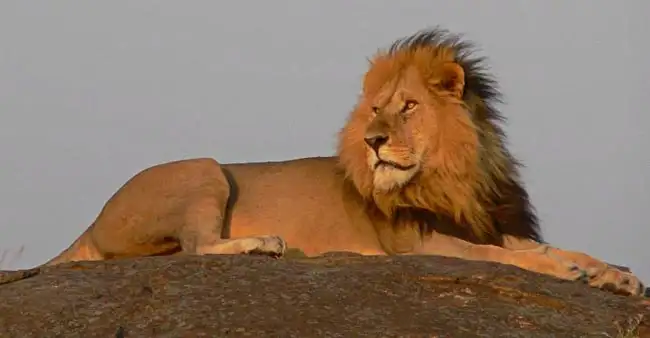
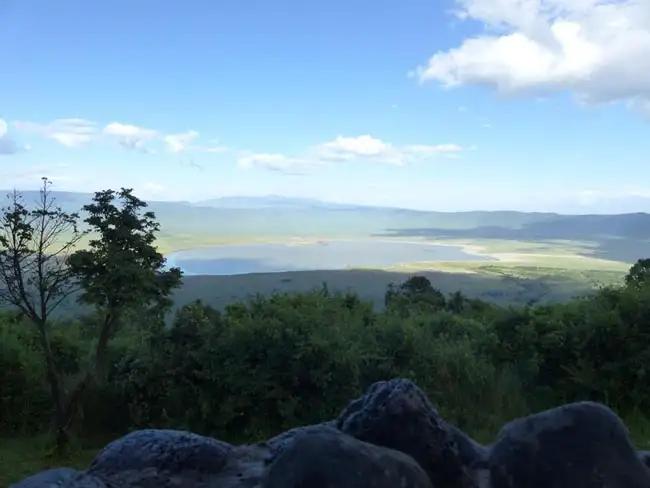
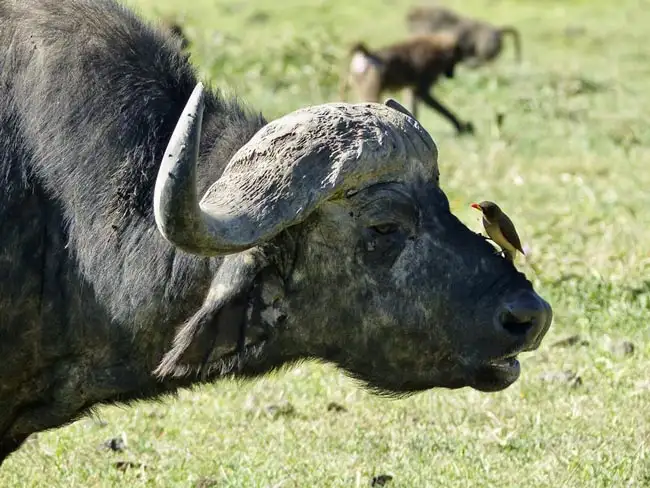
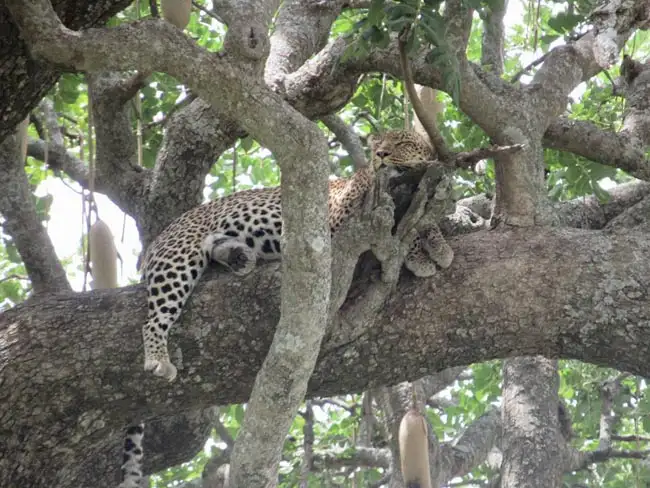
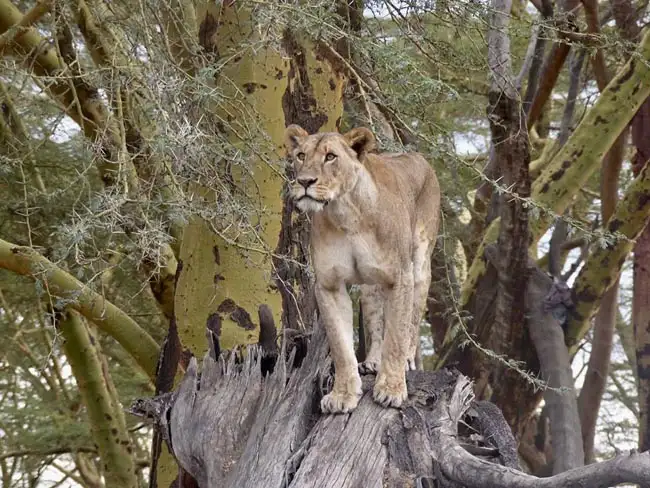
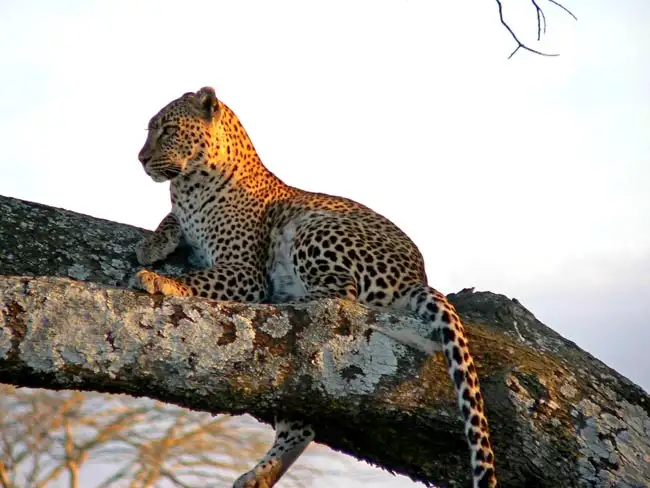
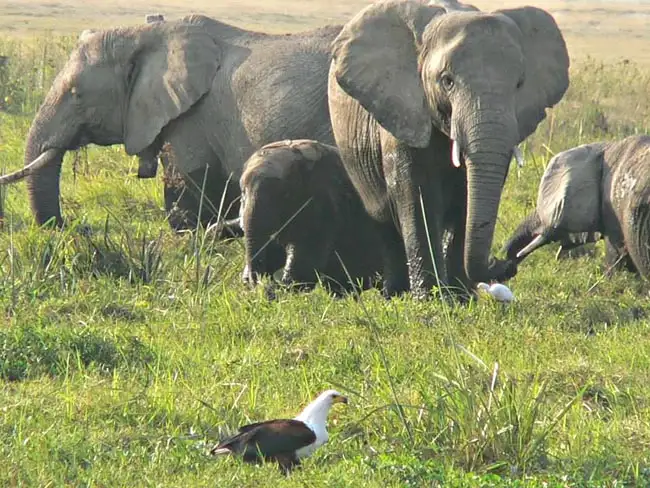
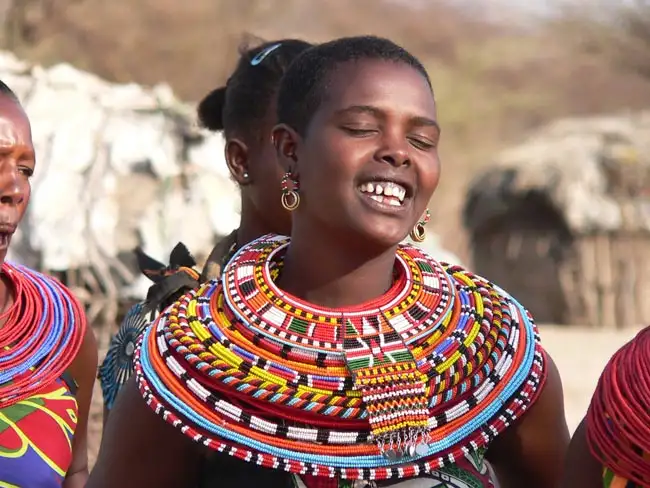
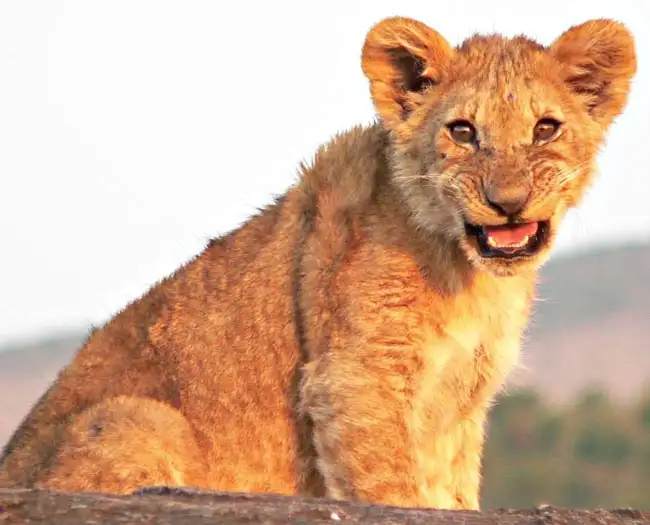
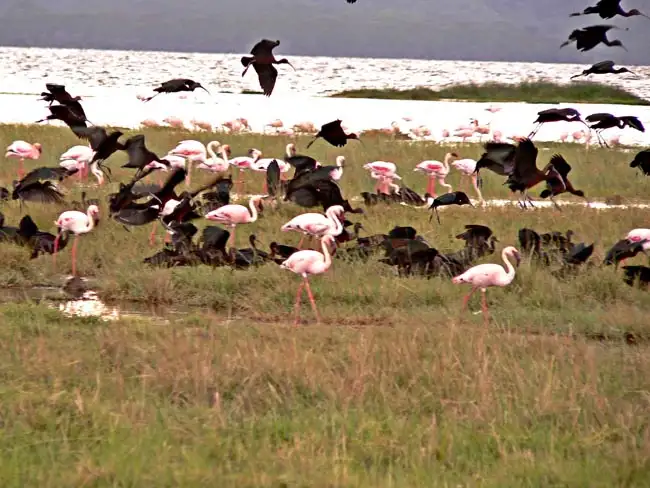
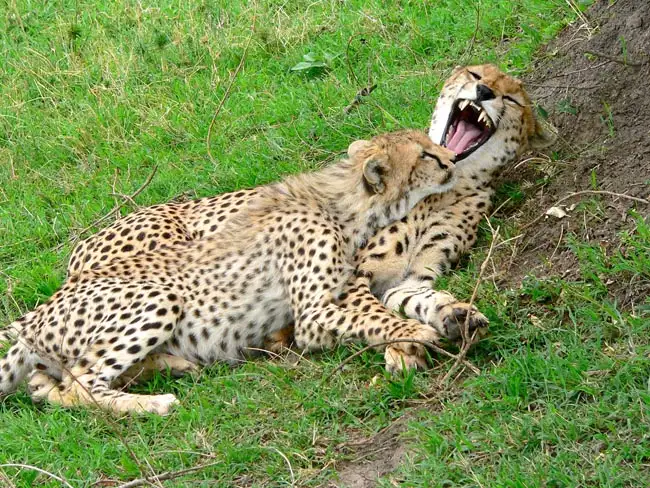
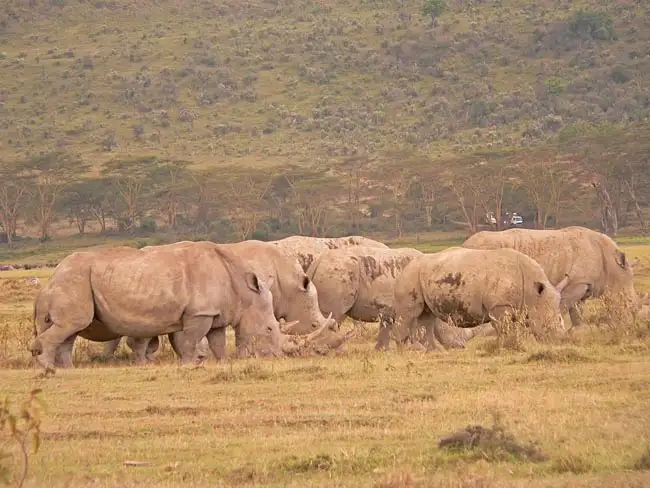
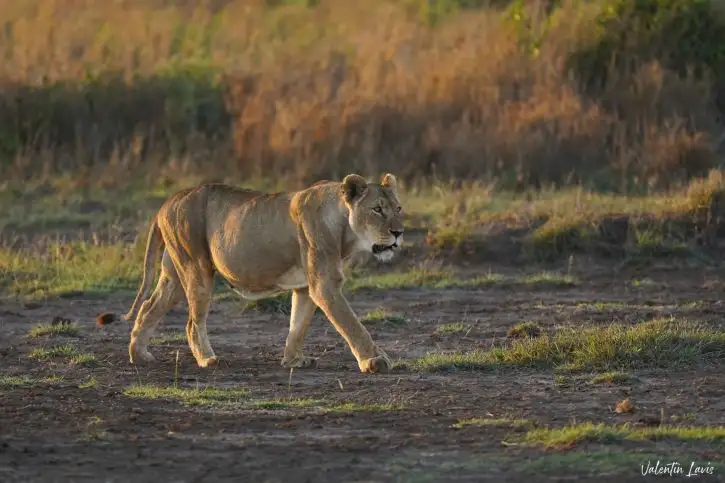
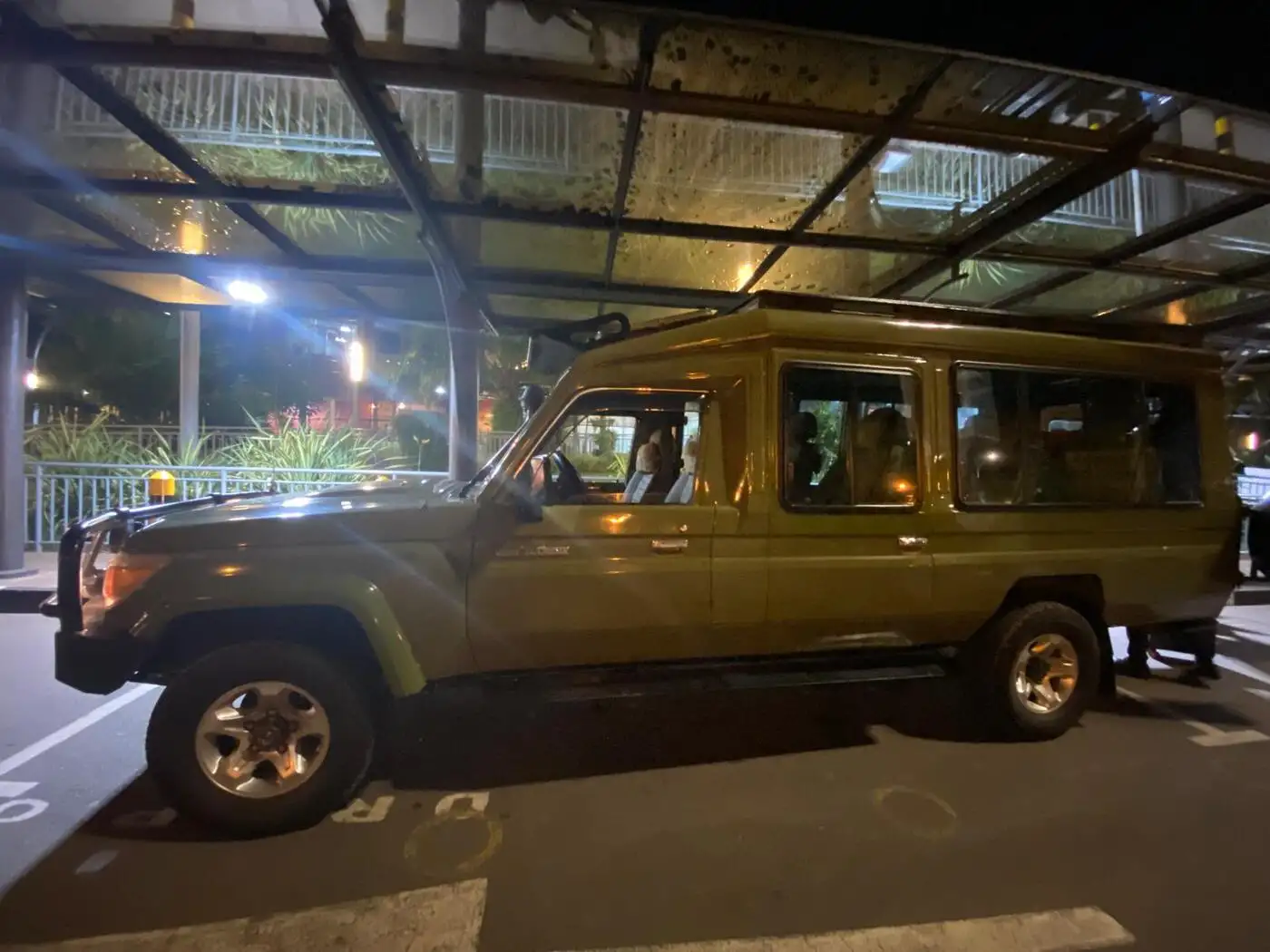
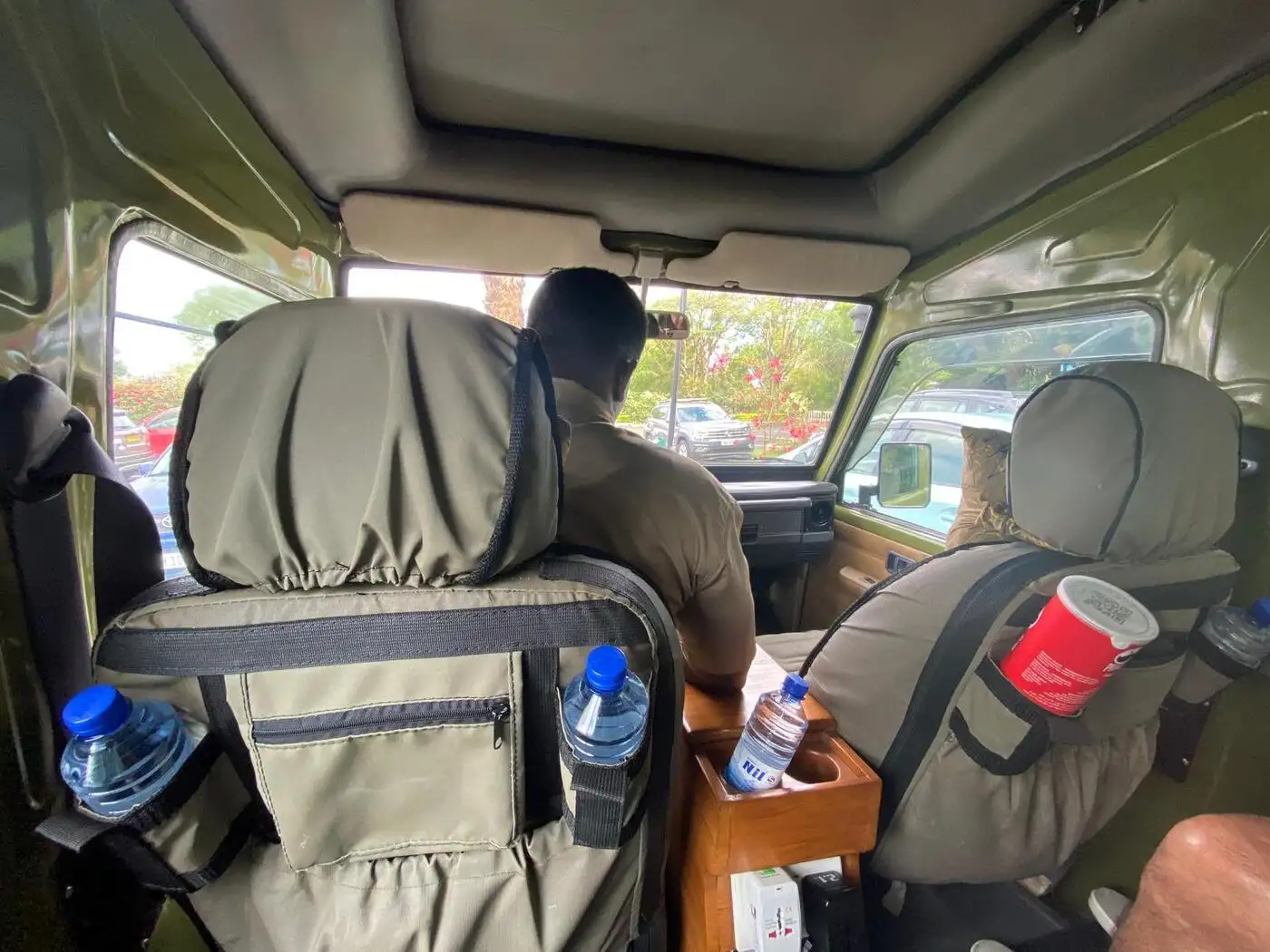
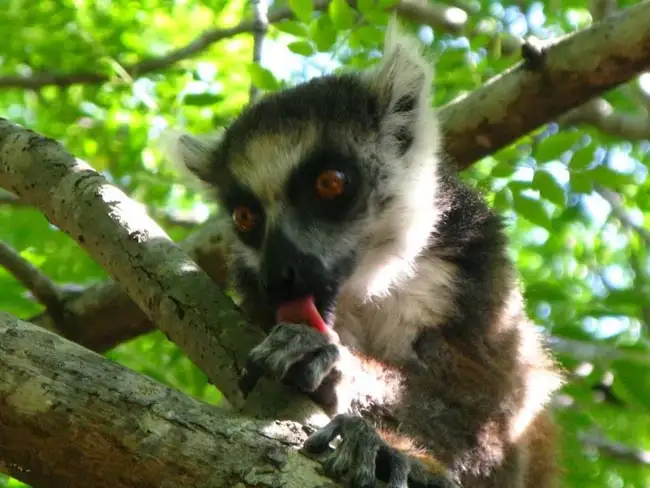
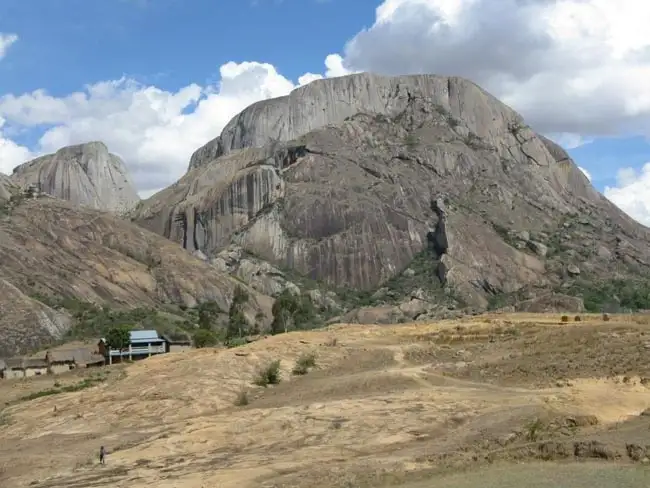
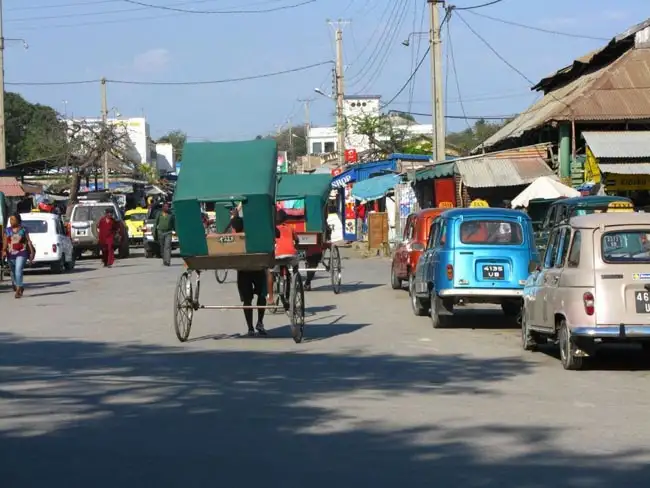
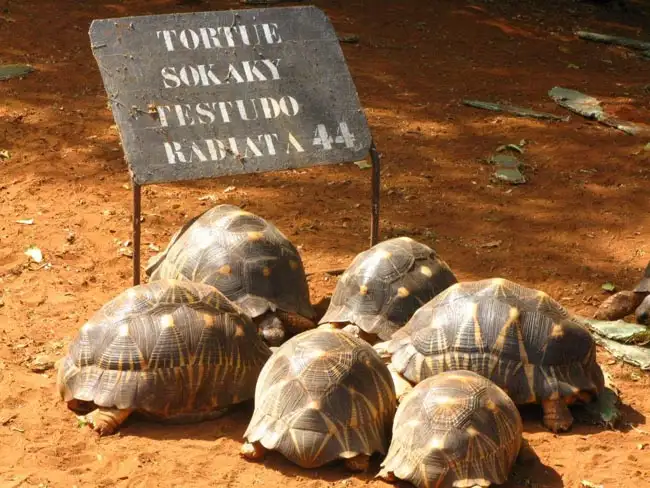
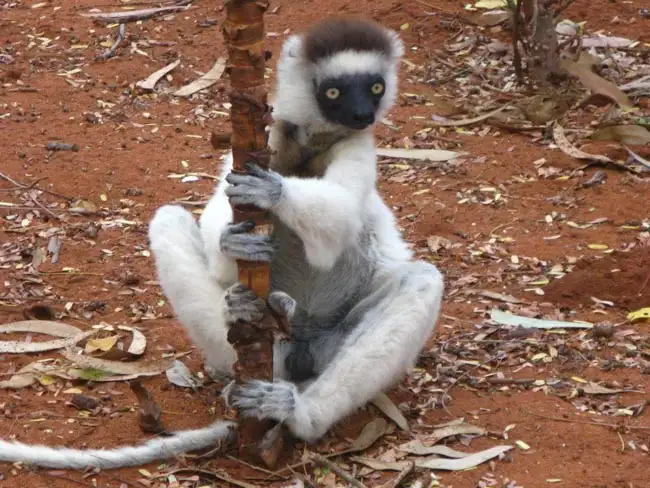
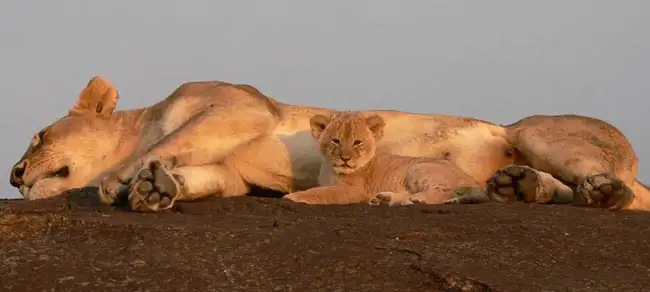
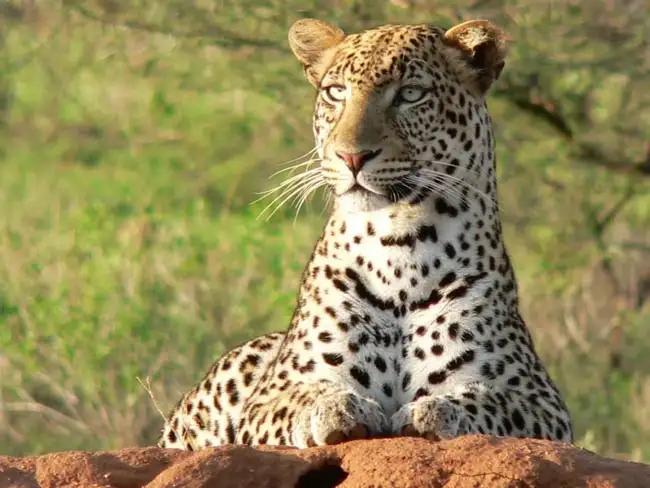
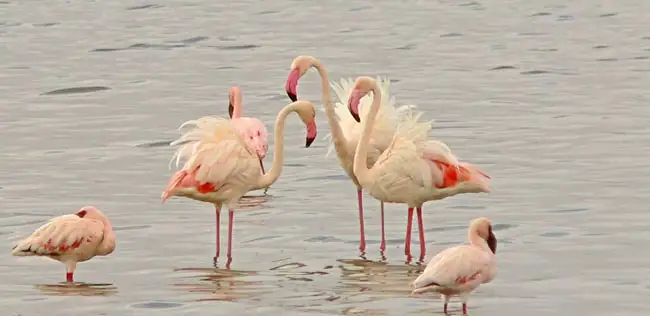
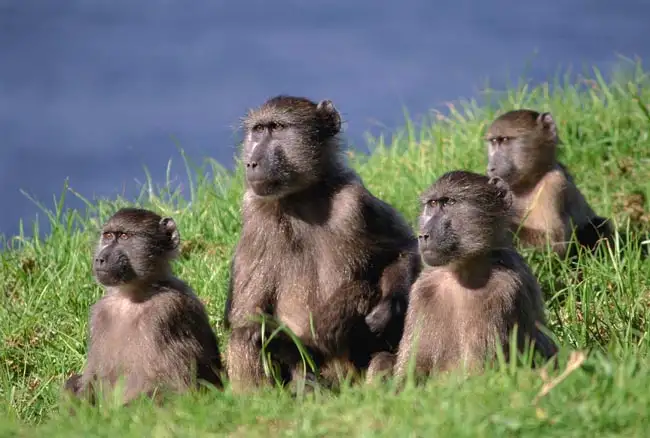
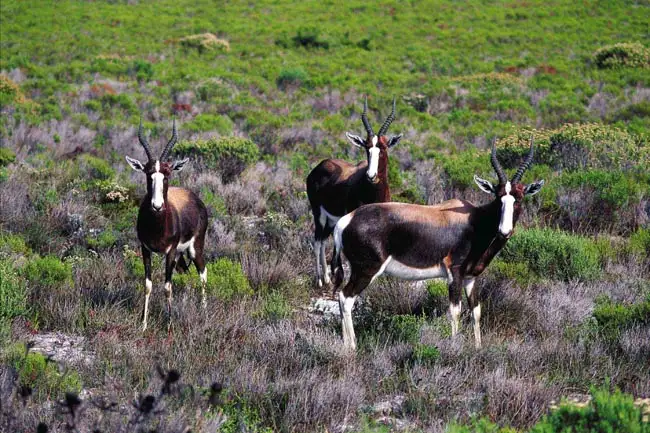
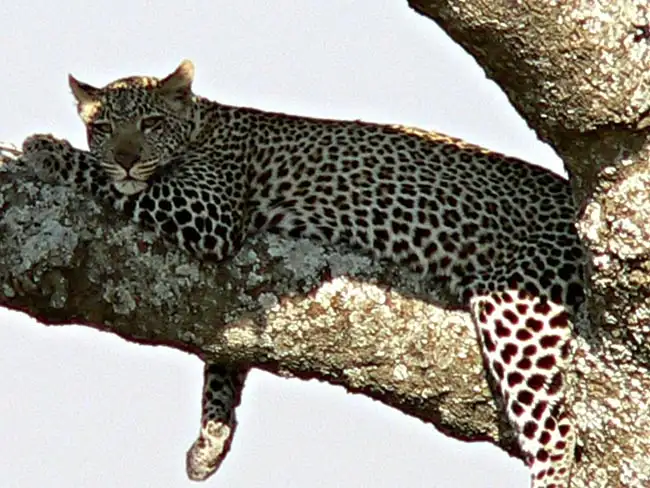
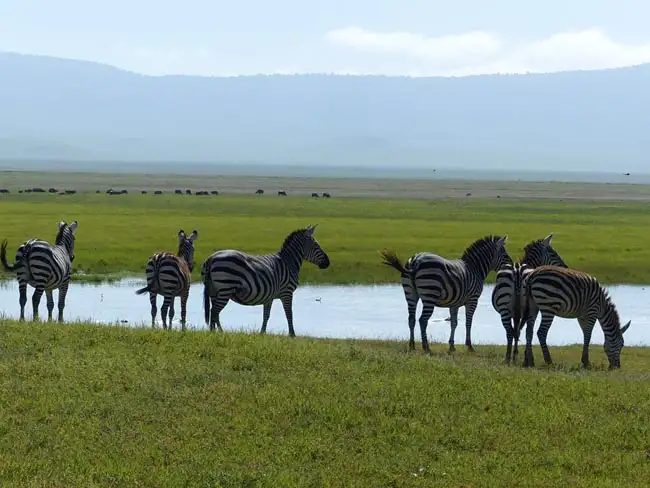
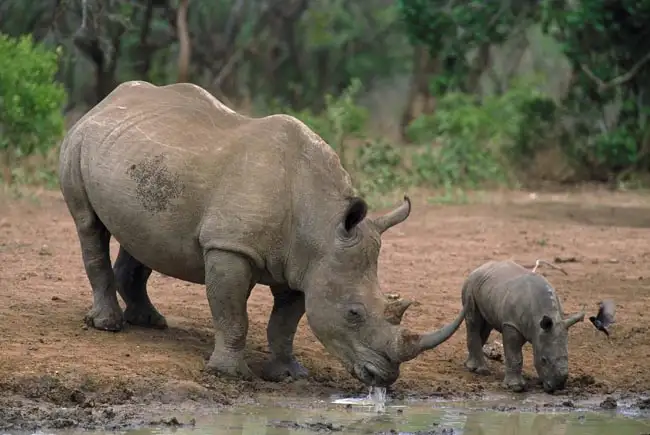
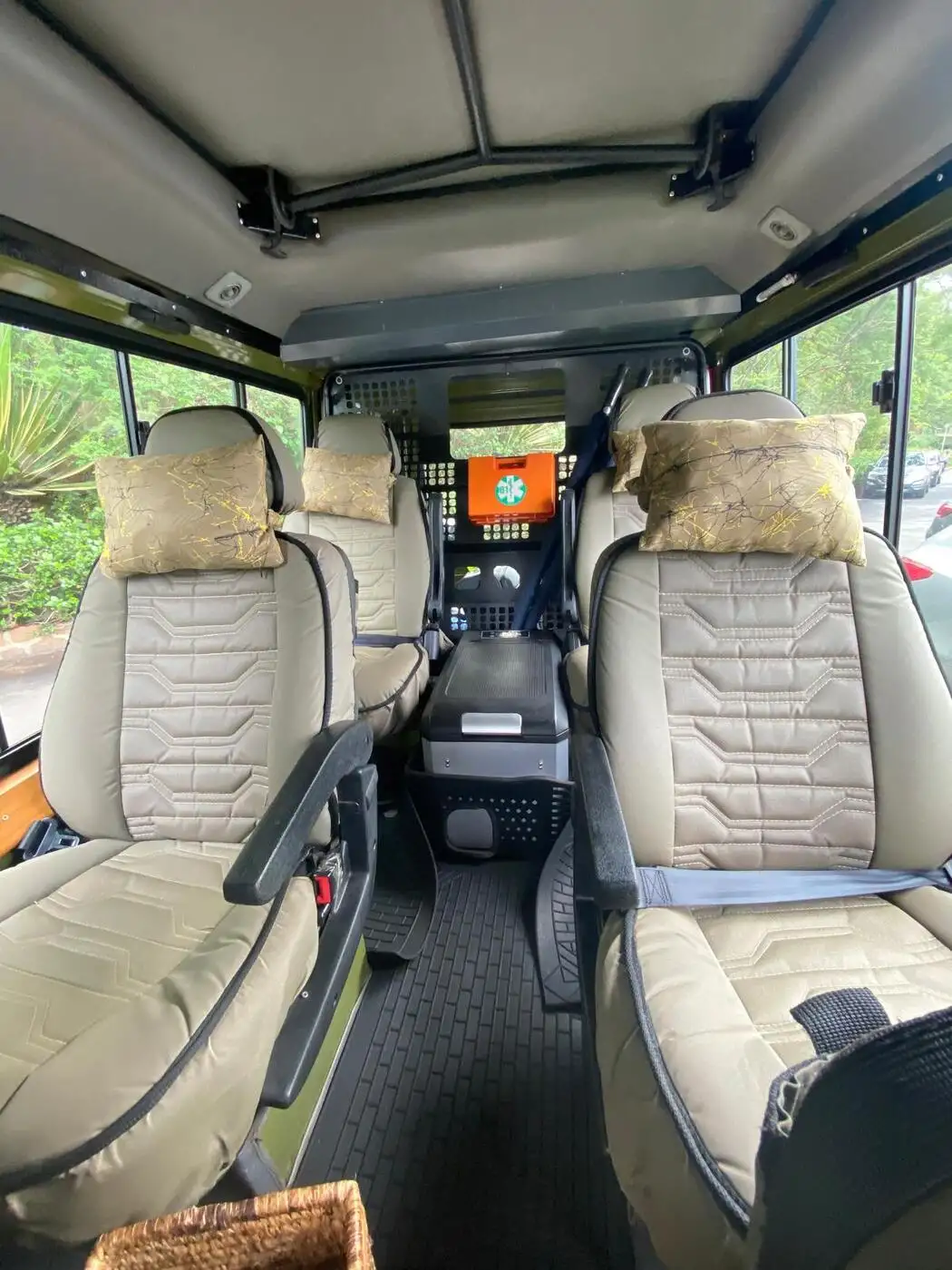

Excellent
Overall Rating
4.6
Extend Your Trip
This tour is part of a series that can be upgraded to make for a longer trip.
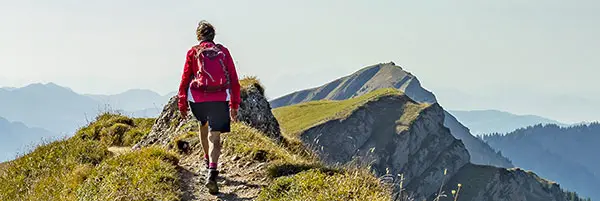
Fast and easy
Book this tour
Book your unforgettable adventure today! For any questions or advice, don't hesitate to contact us.
Have questions?
Contact Us
1-800-665-3998
- Final payment is due 90 days prior to departure.
- A non-refundable $1000 USD deposit is payable at the time of booking
- Optional Single Supplement: $2750 USD (number of singles limited).
This tour may require a mandatory single supplement charge of $2750 USD if you join our share program and we are unable to pair you. - Transferring to another tour or tour date is only permissible outside of 120 days prior to departure and is subject to a $100 USD change fee. (Read our cancellation policy for more info.)
Prices below are per person, twin-sharing costs in US Dollars (USD). Pricing does not include airfare to/from the tour and any applicable taxes. Get general information on flights to/from the tour.
Choose your departure date:
Frequently Asked Questions
- What is the maximum number of participants on a trip?Most of our tours carry a maximum of 18 participants; some tours (ie hiking tours) top out at 16. In the event that we do not achieve our minimum complement by our 90-day deadline, we may offer group members the option of paying a "small-group surcharge" as an alternative to cancellation. If all group members agree, we will confirm the trip at existing numbers; this surcharge is refundable in the event that we ultimately achieve our regular minimum. If the small group surcharge is not accepted, we will offer a refund of your deposit or a different trip of your choice.
- Can I extend my tour either at the beginning or end? What about stopovers?Yes, you can extend your tour either at the beginning or the end and we can book accommodation in our tour hotel. Stopovers are often permitted, depending on air routing. Stopovers usually carry a "stopover" fee levied by the airline.
- How do I make a reservation? How and when do I pay?The easiest way to make a reservation is via our website; during office hours, you are also more than welcome to contact us by telephone.
A non-refundable deposit is payable at the time of booking; if a reservation is made within 90 days, full payment is required. Some trips require a larger deposit. If international airline bookings require a non-refundable payment in order to secure space or the lowest available fare, we will require an increase in deposit equal to the cost of the ticket(s).
Early enrolment is always encouraged as group size is limited and some trips require greater preparation time.
Once we have received your deposit, we will confirm your space and send you a confirmation package containing your trip itinerary, any visa/travel permit related documents, invoice, clothing and equipment recommendations, general information on your destination(s), and forms for you to complete, sign and return to us. Your air e-tickets (if applicable), final hotel list, final trip itinerary, and instructions on how to join your tour, will be sent approximately 2-3 weeks prior to departure. - What about cancellations, refunds, and transfers?Please review our cancellation policy page for details.
- I am a single who prefers my own room. What is a single supplement?All of our tours have a single supplement for those who want to be guaranteed their own room at each location.
This supplement is a reflection of the fact that most hotels around the world do not discount the regular twin-share rate for a room by 50% for only one person occupying a room. Most hotels will give a break on the price, but usually in the range of 25-30% of the twin-share rate. This difference, multiplied by each night, amounts to the single supplement.
The conventional amount can also vary from country to country and some destinations are more expensive than others for single occupancy. In order to be "single friendly," the supplements we apply are not a profit centre for us and we do our best to keep them as reasonable as possible.
On most tours we limit the number of singles available, not to be punitive, but rather because many hotels allow for only a limited number of singles; some smaller hotels at remote locations also have a limited number of single rooms available.
Please note that most single rooms around the world are smaller than twin-share rooms and will likely have only one bed. - Do you have a shared accommodation program?Yes! If you are single traveller and are willing to share, we will do our best to pair you with a same-gender roommate. On most of our tours, if we fail to pair you, we will absorb the single supplement fee and you will default to a single room at no extra charge. At some destinations, however, where single rooms are not significantly discounted, or not at all, we may apply a "mandatory" single in the event that we cannot find you a share partner. This is usually 50% of the usual supplement, but can be as much as 100%. If applicable, this proviso will be noted on each tour page on this website, on your invoice, and in our tour date/price book (available for download under "Resources").
Please choose a departure date!
